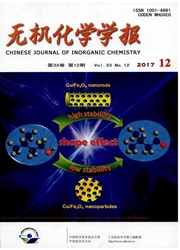

 中文摘要:
中文摘要:
微囊藻水华是湖泊水体中产生最频繁、危害最严重的一类。微囊藻毒素作为富营养化水体中最常见的藻类毒素,获得了国内外的广泛关注与研究报道。我国淡水水体受微囊藻毒素污染的程度已经相当严重,尤其是饮用水水源的污染,对人们的健康构成了极大的危害。因此当前急需确认藻类毒素对我国水环境影响的程度,研究蓝藻水华产毒的生态条件及控制去除途径,探索毒素对人体健康的影响和防治对策,目前关于微囊藻毒素的健康效应的研究多是从饮用水角度出发,今后的研究可收集详细的数据以建立危险性评估模型,并评价各种降低微囊藻毒素危险性措施的效果。文章就微囊藻毒素的产生、性质与结构、对环境与人类健康的危害、以及微囊藻毒素在水处理过程中的控制方法等方面的研究进展进行了综述,并提出了研究展望。
 英文摘要:
英文摘要:
Microcystins generated by Microcystis aeruginosa are one of most hazardous materials and commonly detected in freshwater bodies and attract attention owing to their toxicity. Fresh water in China are suffered from heavy pollution of microcystins, especially the pollutions in source of drinking water pose a great hazard to human health. Therefore it is urgent to make a confirmation regarding the impact of microcystins to fresh water, to study ecological condition of microcystins generation and their controlling and removing technologies. Present studies about health effect mainly focus on drinking water, in future data would be accumulated to establish the assessment model of hazardousness for assessing the treating results. Generation, structure and properties of microcystins, their damage to environment and human health were reviewed, and removal methods to microcystins during water treatment process were introduced. Some problems on the further research with respect to microcystin were proposed as well
 同期刊论文项目
同期刊论文项目
 同项目期刊论文
同项目期刊论文
 Preparation, photocatalytic performance and electronic structures of visible-light-driven Fe-N-codop
Preparation, photocatalytic performance and electronic structures of visible-light-driven Fe-N-codop 期刊信息
期刊信息
